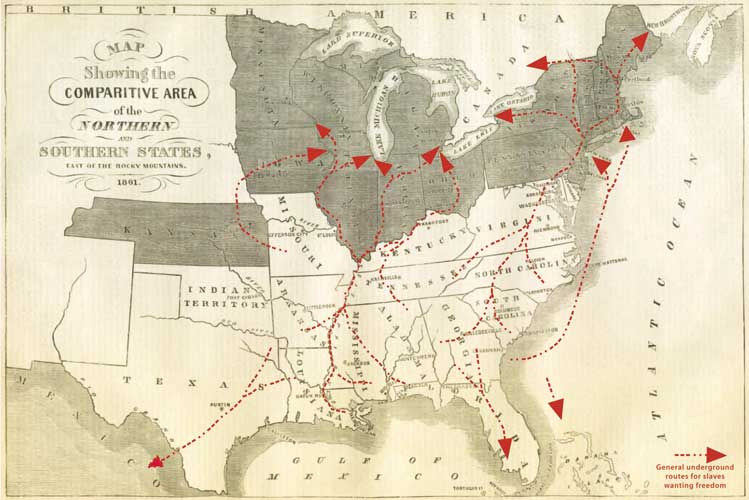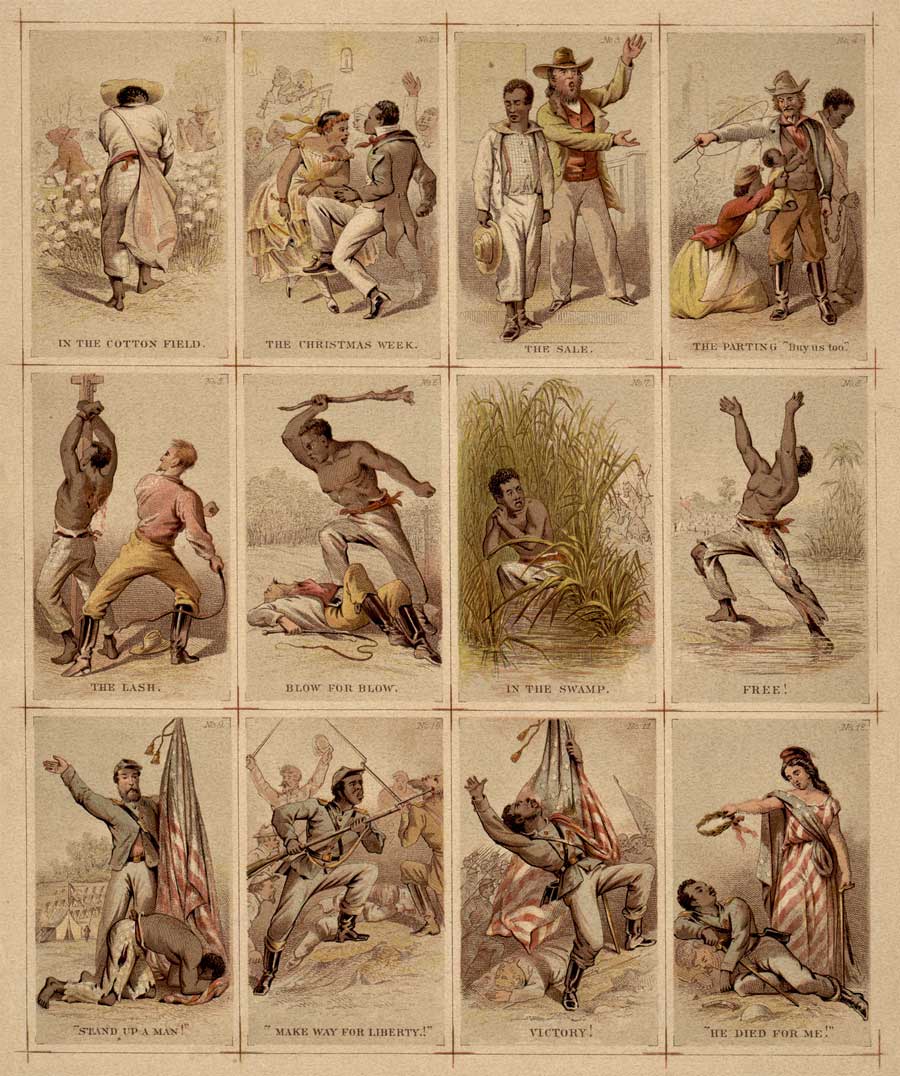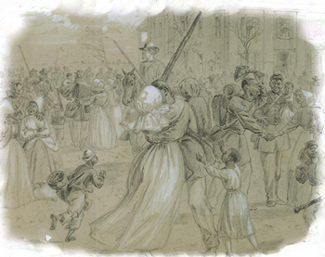Underground Railroad
The Underground Railroad was a loosely organized network of people who secretly helped slaves escape to freedom in the Northern states and Canada before and during the American Civil War. It was composed of free and enslaved blacks, white abolitionists, and other activists, who were called "conductors." Conductors helped to guide runaways to freedom using secret symbols, such as the North Star, stories and songs. Many runaway slaves stopped to live in free states like Ohio, Pennsylvania, New York and Massachusetts, but the majority of them went on to Canada.

Map showing possible major routes escaped slaves took. While the assumed destination was north, slaves also escaped westward through Texas to Mexico, to the south through Florida to the Caribbean, along rivers and on boats along the coast to Canada. Slaves in the border states had a better chance of escaping than those further south because of the greater distance that had to be traveled for freedom.
Slavery, an issue left over from Revolutionary War times, resurfaced. It had been deferred during the writing of the Declaration of Independence; but, it was a controversial subject and continued to fuel division in beliefs through the years.
Though the word "slave" did not appear in the United States Constitution, Article Four, Section, Clause 3 stated: No person held to service or labour in one state, under the laws
thereof, escaping into another, shall, in consequence of any law or
regulation therein, be discharged from such service or labour, but shall
be delivered up on claim of the party to whom such service or labour
may be due. In effect, slaves were recognized as a property on which a tax could be levied. Slaves were allowed to be imported into the United States until 1807 when importation was banned and taxation on slave property was eliminated.
For more information on slavery and Revolutionary War times, click here:

Journey of a Slave illustrates the harsh life of African Americans in bondage.

Slavery became an intensely debated issue in the early 1800s. Congress then used slavery as a pawn in a strategy for admitting states to the United States. Congress wanted a balance between the number of non-slave states and slave states. Non-slave states were usually found north and mid-west where abolitionist thought prevailed and slave states south and west where slave labor was heavily used in agricultural production.
Abolitionists were people who vehemently denounced slavery, and they
lived in the North as well as the South. However, before the
abolitionist, or antislavery, movement took hold even citizens in the North were required, as dictated by the Fugitive Slave Act of 1850, to help catch and return
slaves to owners. If they disobeyed the law, they were either heavily fined or jailed. As a result of the Slave Act, freed slaves as well as those who had
escaped feared being caught. The Slave Act was enacted to balance the fact that California could gain statehood as a free state. While the two events appealed to the pro-slavery and anti-slavery factions, the abolitionist movement gained momentum as a result.
Although some African-Americans had "freedom papers" that showed they
were legally freed, some were tricked and resold, while others were
hunted down by their owners no matter what state they had escaped to.
Kidnapping grew rapidly was a profession. People made a living out of
hunting down, capturing and returning slaves to their owners. Even African Americans already free were susceptible to maliciousness by unscrupulous businessmen. A notable example was Solomon Northup, who was a free man enticed by a job offer, captured and sold into slavery in 1841. He spent twelve years in bondage in the New Orleans area, suffering years of mistreatment, abuse and cruelty by owners. Finally, he gained his freedom and returned to New York where in 1853 where he published his story, Twelve Years a Slave. The book was made into a motion picture in 2013.
Escape to Serve
|
During the war, some escaped slaves enlisted and fought. Sargent William
Harvey Carney (right) had escaped to Massachusetts through the Underground
Railroad. As a member of the 54th Massachusetts, Carney was the first African American to be awarded the Civil War
Congressional Medal of Honor for action at Fort Wagner in Charleston,
South Carolina. |
 |

African American soldiers mustered out at Little Rock, Arkansas, by Alfred Waud, Harper's Weekly, May 19, 1866.
Reconstruction
Slaves considered their lives a living death, so escaping slavery was
paramount. Many were physically abused, whipped, sold away from their families, and labored hard in the hot sun for too many hours a day. Fewer than 4 out of 100 lived to age 60. Slaves had very little hope until Lincoln issued
his executive order, Emancipation Proclamation, January 1, 1863; however, it proclaimed freedom for the slaves only in the rebellious states. Although emancipation helped, it was the passage of the 13th amendment to the United States Constitution in 1865 that provided more clarity by outlawing slavery and servitude, except as punishment for a crime. Passage of the amendment was part of Lincoln's 1864 presidential reelection platform. It was passed by almost every state in 1865, the American Civil War having been brought to an end and southern states being influenced by the reconstructionists.
Reconstruction: After the war, the Reconstruction Act passed in 1867 set up reconstructed state governments in the South overseen by the U.S. Army. The Act also took away the vote from many of the whites, who were mostly Democrats. The administrators, reconstructionists, were mostly Republicans who were appointed by the army to reconstruct the South and bring it politically and economically in line with the the North. Life at this time was not easy. Administrators were both Afro-Americans and whites; however, though some administrators were goodhearted and set up helpful programs, such as schools and charitable organizations, many were corrupted and abused their power status. And racial strife still prevailed. Administrators from the North were labelled "carpetbaggers," while those from the South were called "scalawags."
Return to the top of Underground Railroad, or follow these links...
Documents Toward Freedom
People Who Helped Hundreds
A Safe Resting Place
King Cotton: White Gold
Plantation Life
Share this site with your friends and associates using this link!



